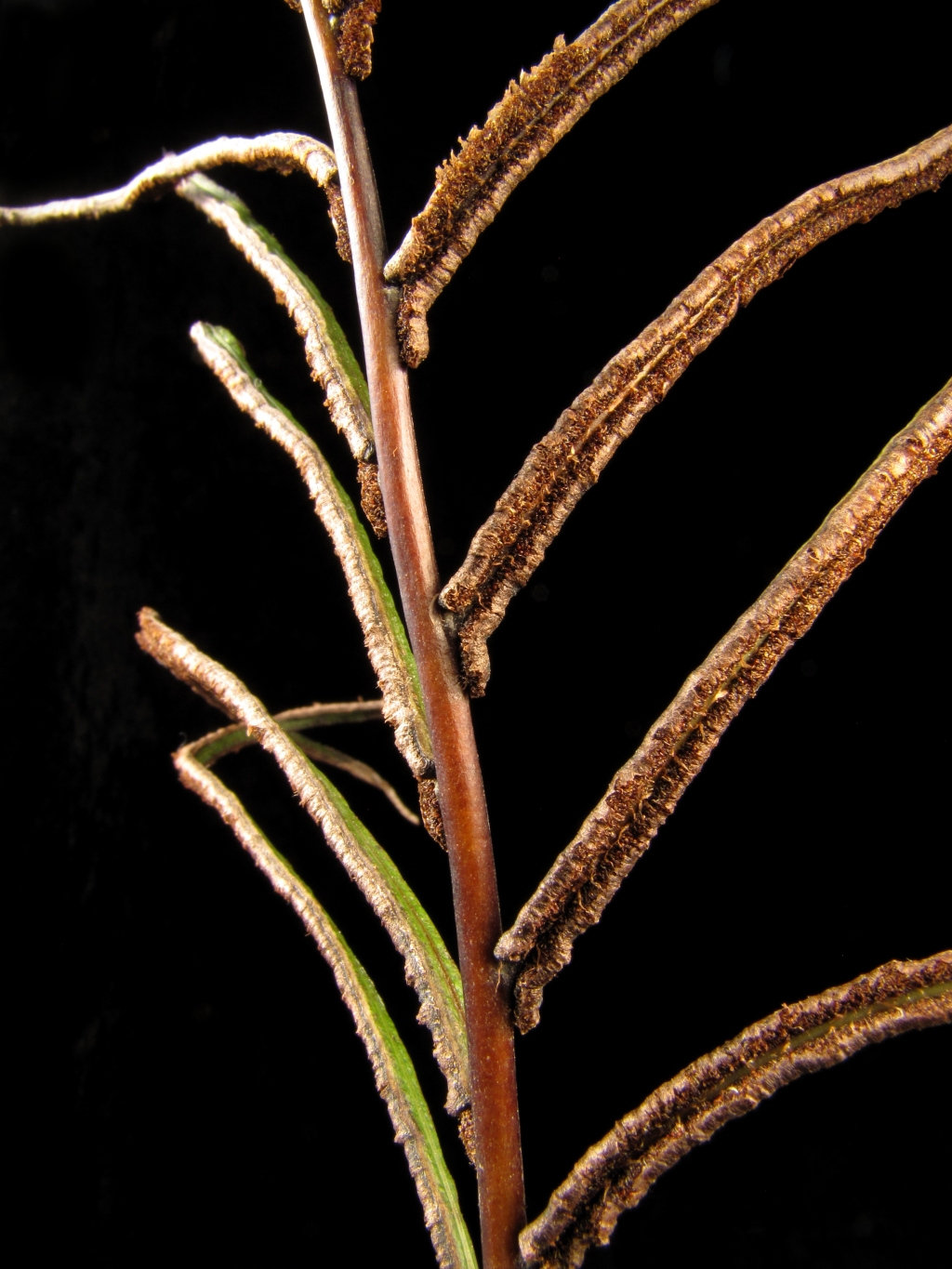Blechnum minus
(R.Br.) Ettingsh. Soft Water-fernRhizome erect to oblique, sometimes forming short trunk. Fronds tufted, erect to spreading, variable in texture (from membranous to fairly harsh), 40–200 cm tall; sterile and fertile fronds dissimilar; young fronds pinkish, with distant pinnae; stipe relatively long, straw-coloured above, darker near base; scales pale brown and papery, numerous at base, scattered above. Sterile frond once pinnate, light green to mid-green, often crinkled; rachis and underside of pinna-midribs with scattered scales; pinnae shortly stalked, narrowly oblong with bases lobed or almost truncate, longest near the centre of lamina, markedly shorter, more widely spaced and rounded towards stipe, margins finely and shallowly toothed, tips rounded or acute; terminal pinna long. Fertile fronds frequently drooping, similar in size to sterile fronds, lower pinnae often barren, others long and slender. Sori covering underside of lamina on each side of midvein.
GleP, VVP, VRiv, GipP, OtP, WaP, Gold, CVU, GGr, DunT, NIS, EGL, EGU, WPro, HSF, HNF, OtR, Strz, MonT, HFE, VAlp. Also SA, Qld, NSW, Tas. (including Flinders Is. and King Is.). New Zealand. A large, sometimes relatively harsh fern of forested areas, occurring in stream beds, along creek banks and on swamp margins, occasionally growing epiphytically on tree-fern trunks or fallen logs. Juvenile or sterile, suppressed adult plants are commonly found in swampy Tea-tree thickets and along heavily shaded stream margins.
Entwisle, T.J. (1994). Ferns and allied plants (Psilophyta, Lycopodiophyta, Polypodiophyta). In: Walsh, N.G.; Entwisle, T.J., Flora of Victoria Vol. 2, Ferns and Allied Plants, Conifers and Monocotyledons, pp. 13–111. Inkata Press, Melbourne.
 Spinning
Spinning



